I often get asked if we can come and replace or repair a patch of floor. Typically, something like, “Oh, there’s just a small spot that has gone a bit spongy. Just needs cutting out and a new bit sticking in. Could you help?”

This always sets alarm bells racing. Why is a bit of the floor squishy? What is causing it, and worse, what is now underneath? It would indeed be a small job to cut away a little bit of board and replace it, but this is rarely what is required. It is more often the symptom of a much more problematic situation, one that I shall try and give you some advice on dealing with in this post
The reason that this is often such a costly job is not because of any great skill required in dealing with it, but because it is often a very widespread issue that will require a lot of time to resolve. Potentially moving (removing) many items and carrying out a lot of grotty and lengthy works. If you want to DIY it, you can save a packet. The work involved, for the large part, is not too taxing, just time consuming
I shall break this down in to a few sections in order to make this guide as useful as possible. Each section will contain an outline, some suggested steps, and some tips and tricks on dealing with what you may encounter. They will be,
- Finding the issue
- Preparing for the work
- Sorting the bilges
Standard Disclaimer; We take no responsibility for any work you choose to undertake. While I hope this will be of use to people anything you read here is purely personal opinion and you should not undertake any work where you do not know what you are doing. If in doubt get a professional! All boats are different and anything written here should not be taken as universal
Finding the Issue
The first question when anybody says there is a problem with damp is where is the water coming from? This may seem daunting, but there are only so many places that it can be coming from and we can trouble shoot our way through. We are assuming here that your boat is designed with a dry cabin bilge. If it is designed to be wet then water in the bilge will not be as useful of an indicator, though depending on certain known factors, like the weather, you may still learn something if the level of water is changing when not expected to.
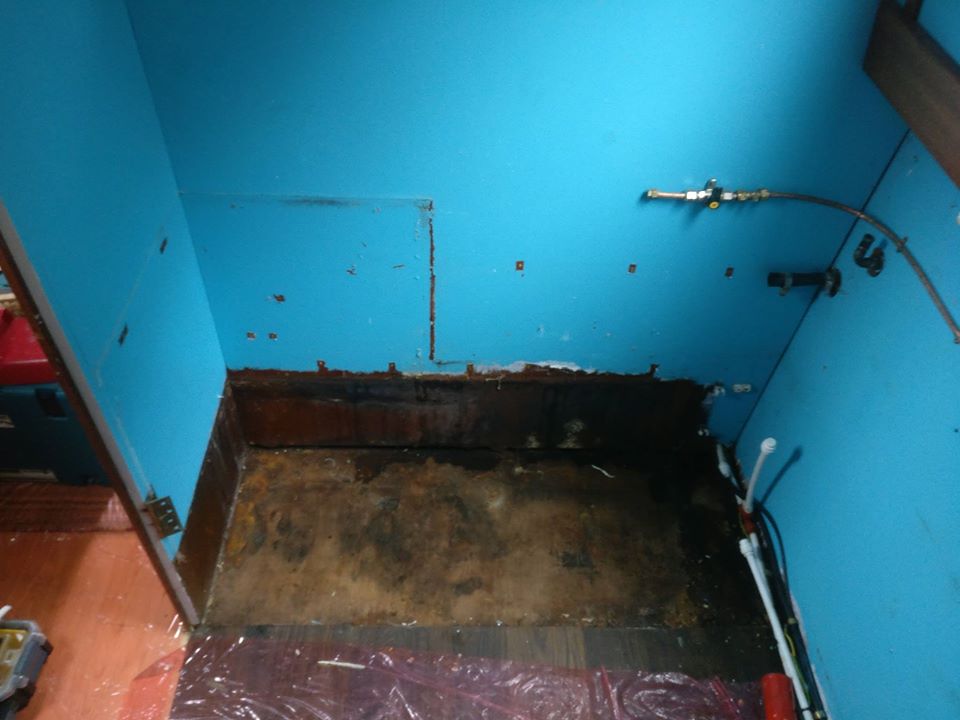
For now we’ll assume that you’ve lifted some boards in the effected area and/or lifted inspection hatches (typically found hidden away in corners, sometimes beneath furniture) at the stern of the boat) and found water beneath. If there is a particular wet area, beyond just the bilges at the stern, then searching locally for the leak is going to be a good starting point. Water will run ‘downhill’, so things nearby or in front of this wet area are likely culprits.
You might be wondering, is the water coming from the canal? Short answer, probably not and if it is then this is not the guide for you. If your hull is unsound, or you suspect it may be, get your boat out the water and get a professional to advise you. It is rare that this is the case if you’ve had a survey, though we have been working on a boat that has sprung a leak! If it is possible to pierce the hull with a scraper or the like, then the hull needs professional attention. As such, let’s just discount this for now until you have excluded all other possibilities

Is it coming from the plumbing? This is one of the major causes of a build up of water. It can often lie unnoticed and rot away timbers and rust bilges unseen until the problem has gotten much worse. An understanding of water systems on boats will help you track down issues here, but we will run through some potential areas that it could be
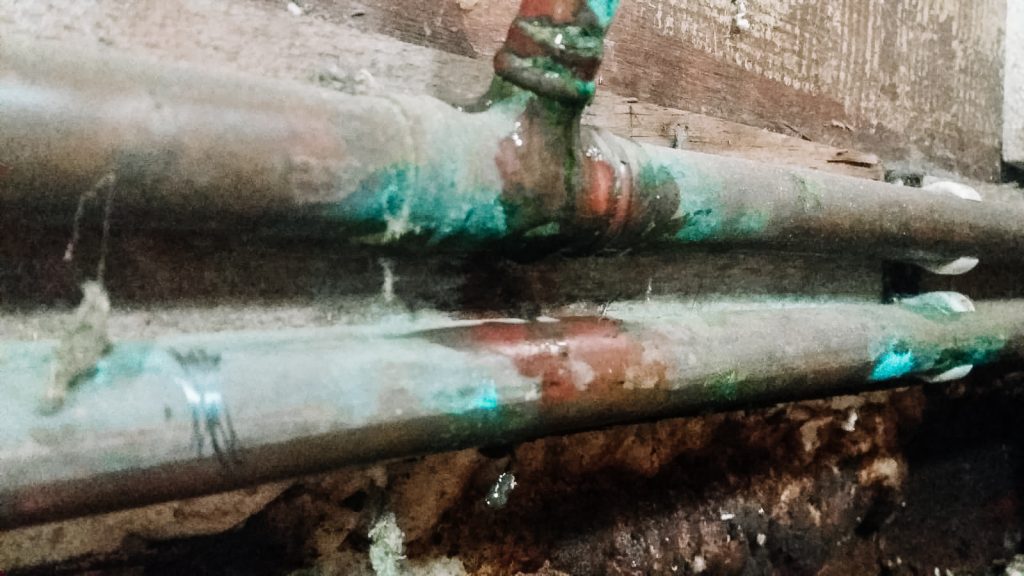
Water comes from your tank and is then put under pressure by a pump. Any utility using water will be connected to this pressurised system so we can tell if there is a leak between pump and outlets as the pump will come on when there is nothing being used. So, pump running when it shouldn’t be equals a leak in the ‘live’ side of the plumbing. Once you know this, then it’s a case of tracking it down and fixing it. It’s more often a joint than a straight run of pipe so check any connections. Pipes, particularly copper pipes, can split if left full and allowed to freeze in cold weather as well, though this would probably cause a more noticeable leak than just a slow drip.
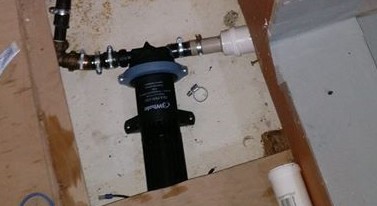
It could be the water is escaping from somewhere after this. Typical things to check are shower and sink wastes. This might be identified by damp or mould local to one of these. Drying thoroughly and then running water through with a paper towel beneath will allow you to check for minor drips. Any joints in pipes running from these should also be check, with particular attention paid to anywhere there is negative fall as water will sit here and have more chance to work it’s way through any weak points. The skin fittings on boats are another week point. Integral welded steel outlets on older boats may have rusted through with time, this happened with the shower on my boat, a late 90’s cruiser stern

If in doubt you can eliminate the plumbing completely by isolating it (or draining it) from the boat and seeing if the problem persists. If it does then this would suggest that the water is coming from outside the boat. Again, we are assuming that this is an above the waterline issue. Is the problem worse in wet weather? Then it’s probably coming in through a weakness somewhere in the shell. The ‘weak points’ are anywhere the shell has been cut through, in particular, windows, mushrooms, chimney collars and other vents and outlets. Doors and doorways could also be to blame. Rust, damp or mould down the wall beneath the cladding might lead you to the offending article. It is worth giving the exterior of the boat a thorough visual inspection. I have also known water to get in from wet bilges, such as an engine bilge, when bulkheads have rusted through to the cabin bilge. While I am not going in to detail on how to fix the multitude of issues you might discover, I will perhaps cover some in future blogs, I will give a shout out here to ‘Captain Tolley’s creeping crack cure’. This can be a handy fix for certain hairline gaps on boat exterior, at least for a temporary fix.
I feel I should also mention condensation. This gets put forward as a source of water in the bilge and can be a problem, though I have not seen many cases where condensation is creating a significant build up of water. It shouldn’t be completely disregarded, but I would look for other culprits first unless you have a lot of bare and uninsulated shell beneath the cladding.
Preparing for the work

You’ve found and fixed you’re leak. Now you need to assess the damage and decide on a course of action. You should be able to dry the bilge, and have it stay dry. If not, then you may still have an issue. It could be that you have an area of flooring/woodwork that has been affected and a rusty bilge. How much should you do? It is tempting to want to pull everything up and start again, but this may not be practical. Factors such as, how accessible is the bilge, the age and value of the boat, the state of internal fitout, the severity of the damage/mould/rust will guide you as to how much is worth doing.
Rust looks awful, 1mm of steel becomes 10mm of rust! When you first look at a bilge that has gotten wet it can be quite frightening. If you are in doubt, then seek professional advice. A surveyor will be able to help you gauge what is problematic and what is just cosmetic. Mould should be dealt with as this can be bad for the health and residual damp and mould can affect surrounding woodwork.
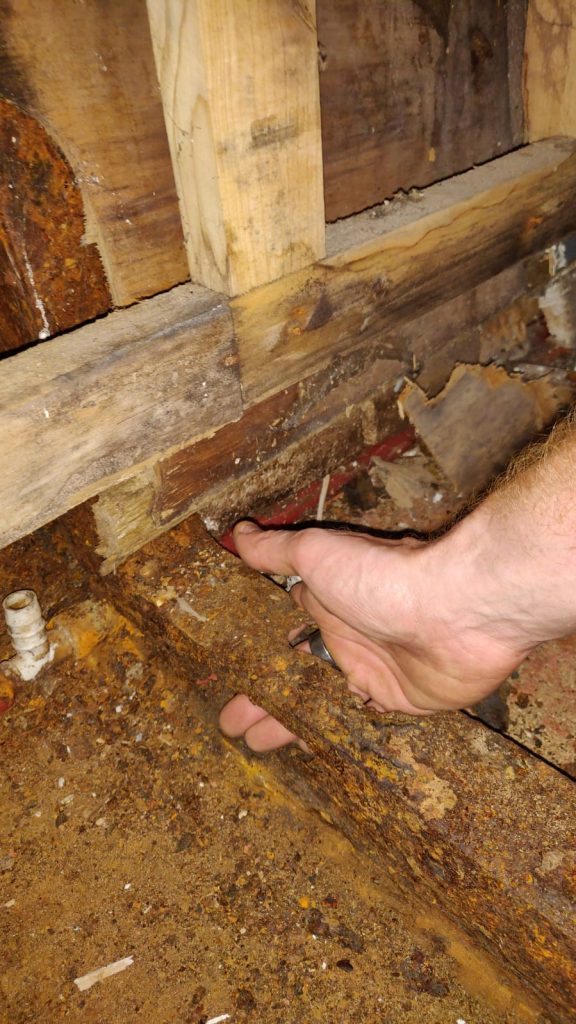
If there is relatively little in the way of fitout and bulkheads it may be simple to lift everything for access. If the opposite is true you might find it very difficult to lift boards which are pinned down by walls, kitchen, bathroom, tiles and all sorts of fitted furniture and the like. Perhaps you can cut out the rotten area and replace, then deal with the rusty bilge locally and at the stern. If the rust is not too bad, you can possibly just dry out the bilge and trust that it will remain relatively dry in the future so that the rust will not significantly increase.
Ideally you want to remove all rotten wood and clean, treat and paint any rusty sections of bilge (and walls of the shell if effected). In extreme cases this can mean removing the boats fit-out completely. If this is required then a dock with covered storage is the best situation, but it might be possible to deal with half a boat at a time and do it this way while on the cut.
If there is extensive remedial work to do then it is often as quick, and probably more sound, to remove whole panels of wall and floor and replace them. Cutting bits out and bodging them back in will likely leave a creaky floor and messy looking boat. Not to say it can’t be done, but by the time you have done a proper job of cutting out a piece of flooring, patching it and making good you may have been able to just take out the bulkheads and lifted the whole lot. This also makes it easier to support the flooring properly. I will cover floors, sub floors etc in more detail in other blogs
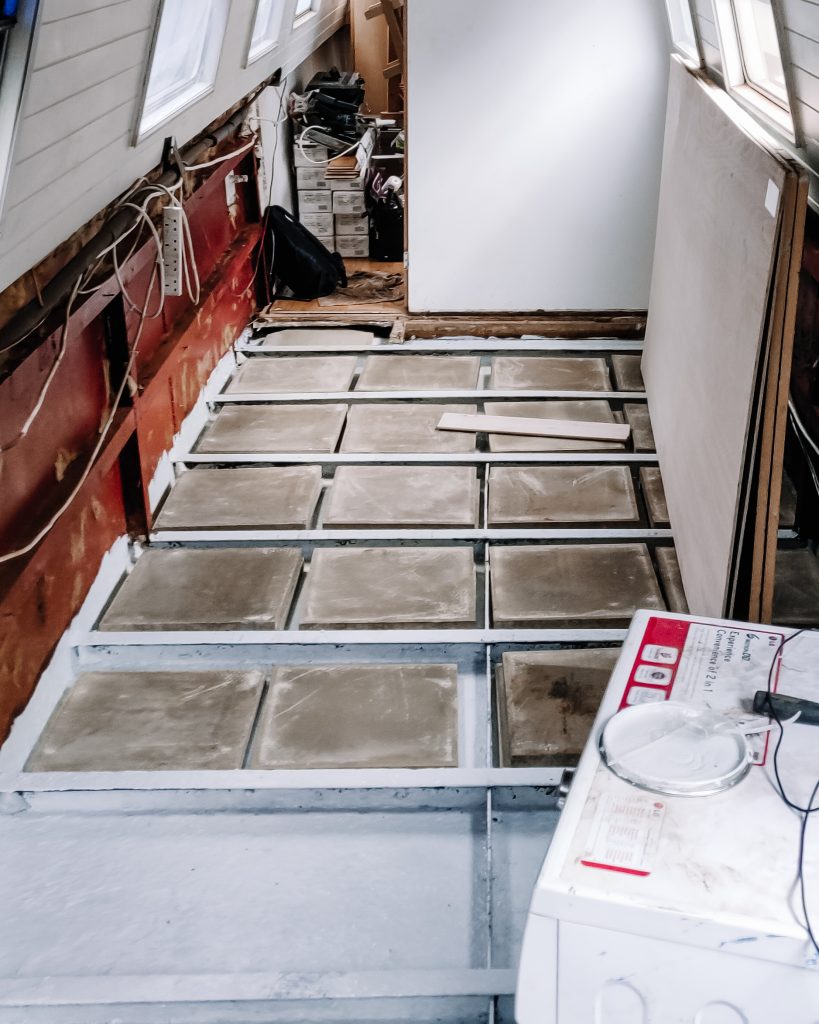
We are mostly dealing with bilges here, though the same techniques can be applied to other metal elements of the shell, so I will leave the woodwork to one side. The flooring, and subfloor will want to come up and then any ballast will need lifting. It is difficult to really get a bilge bone dry until anything is removed and it is fully exposed. Even then, if there are thick layers of rust this can trap a lot of moisture. You will want to dry out ballast before putting it back in, unless it’s pea shingle in which case bin and replace with slabs! Care should be taken when removing a boats ballast. Narrowboats are inherently pretty stable (wobbly, but unlikely to capsize), but do be aware that moving/removing ballast may affect your boat and it’s position in the water
Top tip: If you are going to remove sections of the fit-out, take lots of photos and notes while you do. It is easy to forget how everything went together when you come to put it all back later on
Sorting the Bilges
By this point you should have full access to all the areas you want to deal with. Like I have said, we are discussing the metal work here. Some of the carpentry elements you will find dealt with in my other blogs, but the spectrum of work is too wide to cover here satisfactorily.
I would mention again, rust can look much worse than it is, but if you are unsure of the integrity of the hull then seek professional advice. The next step is to physically remove as much rust as possible. Rust is an oxide of steel and is unusual in that it flakes away from the surface of the metal where many other metals’ oxides adhere to the surface. Take for example aluminium, a highly reactive metal that is protected by it’s oxide coating. Sadly, this is not the case with steel and rust and you will want to remove as much off the loose rust as possible
For DIY purposes I would suggest starting with giving the entirety a good going over with a scraper and then sweeping up the loosened rust. Be aware that dealing with the rust is probably the messiest bit of the whole job and you should take care to wear appropriate PPE, including but not limited to goggles, mask, and probably a boiler suit.
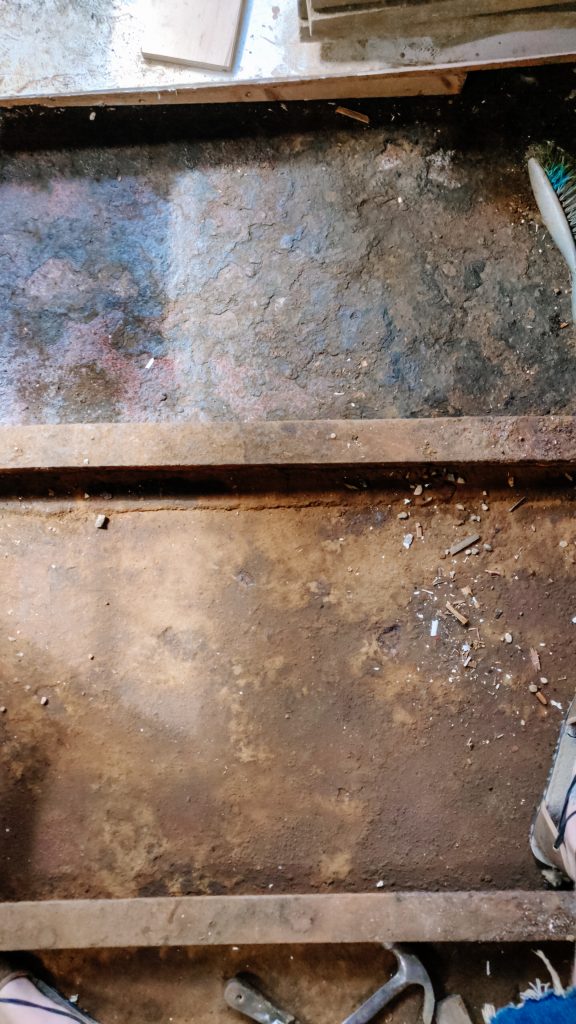
If the area effected is large and the resources are available, then it may be practical to mechanically remove the rust with a needle gun or with blasting. It is best to seek professional advice if you want to do this so that you can be advised on the suitability of these techniques.
Once the area has been scraped over then it will need a thorough brushing with a stiff wire brush. This can be a hand brush or a drill attachment, either way it’s dusty, horrible work to do so masks on! Sweep away whatever comes off and hopefully you will have a surface that is beginning to look a little less shocking.
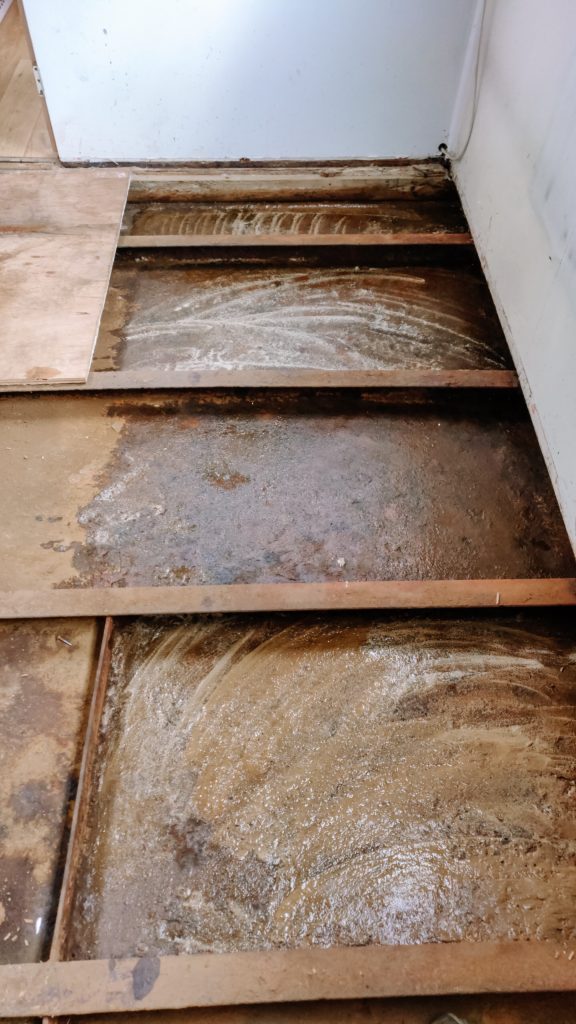
You won’t be able to remove all the rust (unless blasting of course) so the next step is very important and should not be skipped. A rust converter should be used on the entire surface. There are a few different products and it is to be noted you will likely want to order these in advance from the internet as they are not readily available in shops in useful quantities (you might try Halfords and Toolstation, but better to go online). Fertan and Vactan are both popular, though check whether the product you are using needs washing off after application as this adds an annoying and, I feel, unnecessary step. My personal favourite is FLAG rust converter and primer as this can be painted on and left and leaves a primed surface ready for topcoat.
All of these converters work in the same way, they change the red oxide into a black oxide which is stable and will remain stuck to the steel. Don’t ask me the science of it, I am sure that is available elsewhere on the internet. The idea is that you want a stable surface to apply your new finish too, otherwise rust underneath your paint might damage the surface and lead to water being able to penetrate and further rust the metal

You could stop at this point, but I feel if you have gone to all the trouble then why not future proof it? You aren’t going to want to get back in the bilge any time soon and if you put a decent topcoat on then you will have a much better level of protection should you have any leaks in the future. My personal choice is Manor Coatings Zinfos 340 WS. You can get this online or from many auto-motive paint suppliers. It is one-part primer topcoat with a anti-corrosive. I like to think of it as Hammarite for grownups. It is cheaper and can be mixed to any colour, so why not. I like a light cream or grey, so that you can easily see oil, rust or any other issues in the future, but whatever floats your boat (if you’ll pardon the pun)
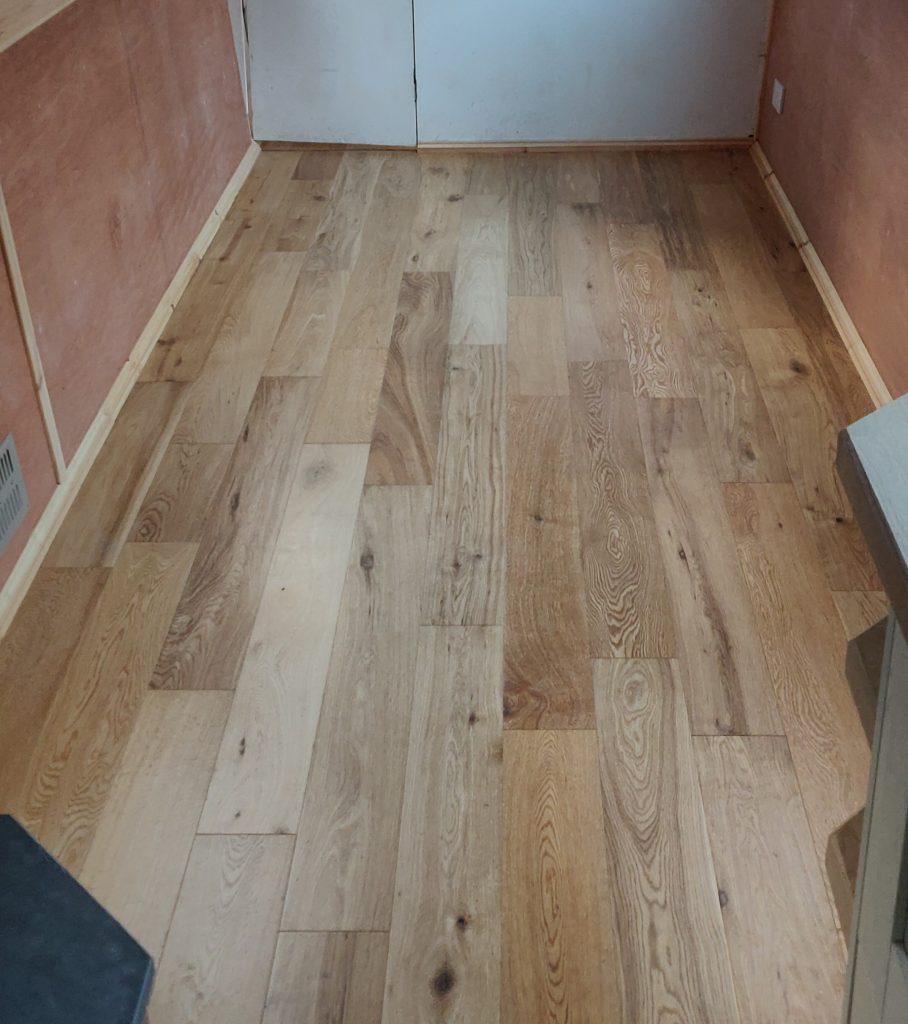
Two coats of Zinfos 340 and your metal work should be fairly bomb proof (not literally mind). After this you are all set to replace the ballast and begin rebuilding/re-fitting the innards of your boat. Assuming you have taken things out with care and have good records of how it went together then this should be a relatively pain free exercise. You’ll likely be replacing your subfloor in part if not in whole, exterior grade ply here is fine but some people like to be belt and braces and stick in marine grade. This is fine, though it is pricey and very heavy.
Well, you’ve finished. You might not be able to see you’re handywork but now you can sleep soundly knowing that you’ve done a proper job. Why not relax from your hard days labour and check out some pictures on our Instagram feed or see some of our projects on our website. Until the next time
Ta Ta for now

